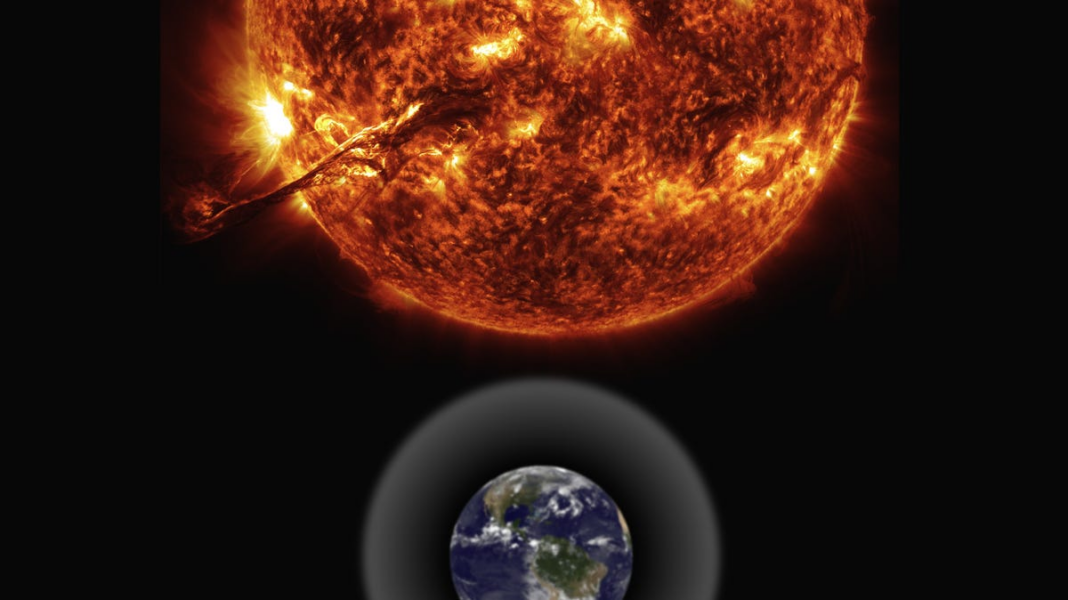Solar activity and satellite disruptions: The sun’s solar maximum impacts Earth’s atmosphere
Since entering a phase known as solar maximum on October 15, the sun has exhibited unpredictable weather patterns that have resulted in various atmospheric phenomena, as reported by NASA. This occurrence, which takes place approximately every 11 years, coincides with a flip in the sun’s magnetic field, leading to peaks in solar activity.
NASA has noted that the surge in solar flares and solar winds interfere with Earth’s magnetic field. Recently, this solar activity affected the orbits of three small satellites from Australia, making them re-enter the Earth’s atmosphere and burn up sooner than originally expected, according to ScienceAlert.com.
The sun’s explosive energy has also contributed to an increase in sightings of the northern lights, or aurora borealis.
What triggers high solar activity?
The sun, a massive sphere of charged hot gas, generates a strong magnetic field, as per NASA’s explanation.
It follows an 11-year “solar cycle,” evident in the fluctuation of sunspots on its surface. As the number of sunspots rises, solar flares, plasma emissions, and other types of space weather also increase. Consequently, the Earth experiences bursts of energy and material from these large solar eruptions.
The sun’s ongoing solar cycle
Scientists predict that the solar maximum, representing the peak of solar activity, is expected between late 2024 and early 2026, according to Space.com. As we approach this solar maximum, sightings of the northern lights are anticipated to intensify and become more frequent.
Keeping an eye on the sun’s activity is crucial as it sets the stage for powerful explosions that eject light, energy, and solar material into space. These occurrences include solar flares and coronal mass ejections from the sun’s surface.
Rapidly moving particles resulting from these solar eruptions can:
- Damage satellite equipment by impacting its circuits and solar panels.
- Disrupt high-frequency radio transmissions by removing electrons from atoms and molecules.
- Pose radiation risks to astronauts in space and passengers on high-altitude flights in polar regions.
Changes in the sun’s magnetic fields
By viewing the graphic below, you can observe how the sun’s appearance has transformed from February 2021 to October 2023. As the sun approaches the peak of its magnetic activity cycle, it displays more intense eruptions, denser sunspots, plasma loops, and swirling streams of very high-temperature gas.
Severe geomagnetic storm in North America enhances aurora visibility
In early October, residents in northern regions of the U.S. and as far south as Alabama had the opportunity to see vibrant displays of the northern lights. This phenomenon was intensified by a solar coronal mass ejection that directed plasma clouds and charged particles toward Earth, resulting in a notable geomagnetic storm. So significant was this storm that NOAA issued a rare G4 geomagnetic storm watch, marking it the second time this year.
This storm watch marked the first G4 level alert from NOAA in 19 years, just one level shy of the most severe solar storm rating. Along with the solar activity, the sun released a powerful burst of radiation, noted as the largest solar flare observed since 2017, according to NOAA.
Furthermore, since NASA predicts that the solar maximum will persist until 2025, those seeking to view the northern lights will have ample opportunities ahead.
This article was updated with additional information.
SOURCE NASA, European Space Agency, NOAA, Space.com, ScienceAlert.com, and YSL News research

